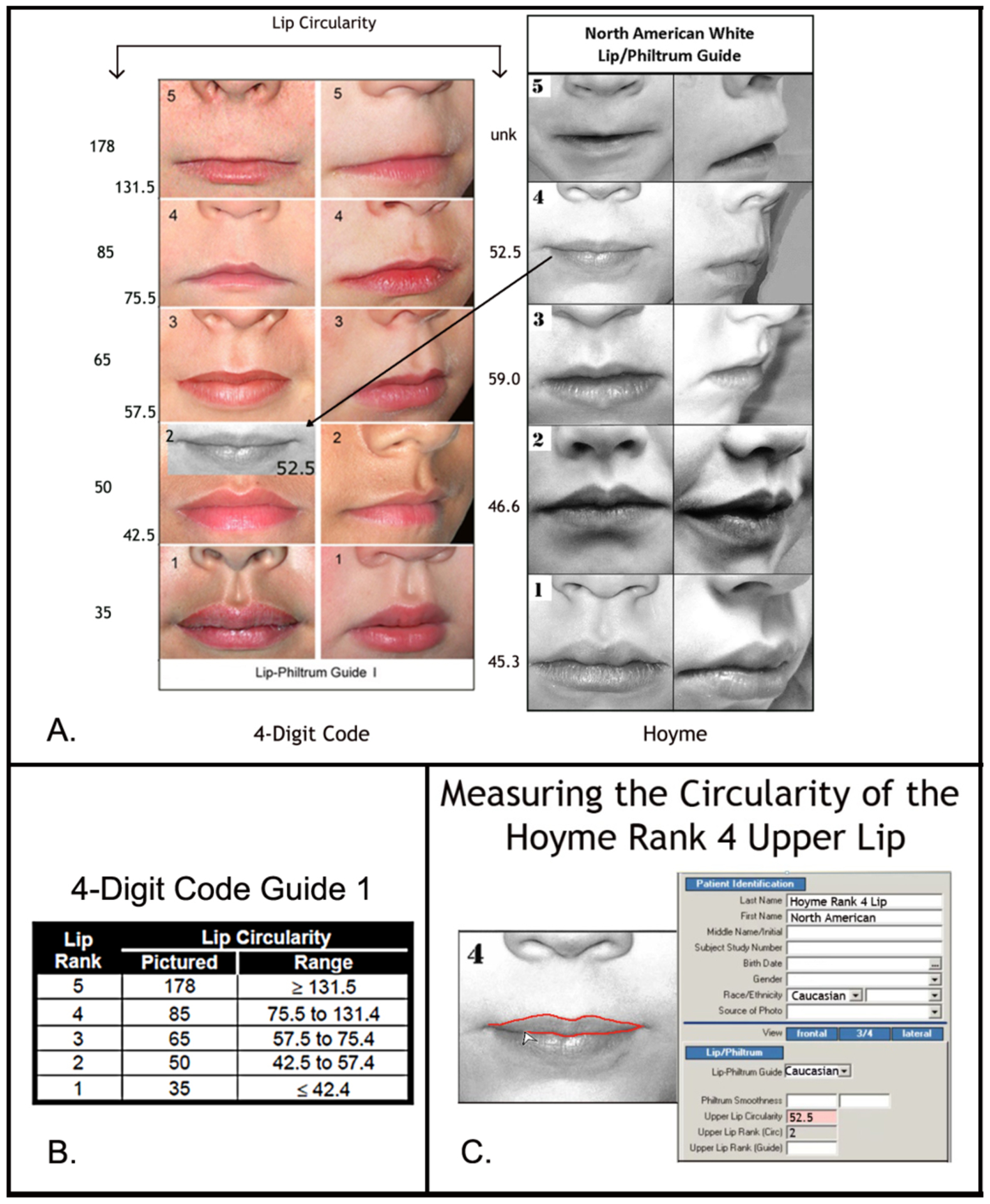Figure 2.

The Hoyme North-American White Lip/Philtrum Guide differs from the 4-Digit Code “Caucasian” Lip-Philtrum Guide 1
The Rank 1 through 5 philtrums depicted on both Guides appear broadly equivalent, but the upper lips are substantially different. A) Lip circularity (perimeter2/area) is printed to the left of each guide. B) The range of circularities that define each 4-Digit Code Lip Rank are presented in the Lip Circularity table printed on the backside of the 4-Digit Code Lip-Philtrum Guide. C) The FAS Facial Photographic Analysis Software [7] computes circularity when the User outlines the vermilion border of the upper lip (click on video link for demonstration http://depts.washington.edu/fasdpn/movie/Fig2Cvideo.mp4). Lip circularity confirms that the Hoyme et al. Rank 1, 2, 3, 4 and 5 upper lips are equivalent to the 4-Digit Code Ranks 2, 2, 3, 2 and 5 respectively. There is no lip image on the Hoyme et al. Guide that reflects the 4-Digit Rank 1 or Rank 4 lips. The lips on the 4-Digit Guide become progressively thinner (circularity becomes progressively larger) with increasing Rank. This is not true for the Hoyme et al. Guide. The circularity of the Hoyme et al. Rank 4 lip (the clinical cut-off for FAS) is 52.5, confirming it falls within the circularity range of the 4-Digit Code Rank 2 lip. The black and white overlay (A) of the Hoyme et al. Rank 4 lip on the 4-Digit Code Guide 1 demonstrates both visually and numerically that the Hoyme et al. Rank 4 lip is substantially thicker than the 4-Digit Code Rank 4 lip. This analysis confirms the Hoyme et al. North American White Lip/Philtrum Guide is not a valid tool for use with the FASD 4-Digit Diagnostic Code.(North American White Lip/Philtrum Guide used with permission from the American Academy of Pediatrics).
